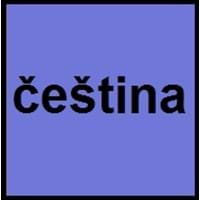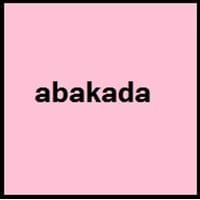Countries
Czech Republic, European Union
Philippines
National Language
Czech Republic
Philippines
Second Language
Not spoken in any of the countries
Filipinos
Speaking Continents
Europe
Asia, Australia
Minority Language
Austria, Croatia, Germany, Slovakia
Australia, Canada, Guam, Hong Kong, New Zealand, Singapore, United Kingdom
Regulated By
Institute of the Czech Language
Komisyon sa Wikang Filipino, National Languages Committee
Interesting Facts
- The Czech language was known as Bohemian as early at 19th century.
- In czech language, there are many words that do not contain vowels.
- In 1593, "Doctrina Christiana" was first book written in two versions of Tagalog.
- The name "Tagalog" means "native to" and "river". "Tagalog"is derived from taga ilog, which means "inhabitants of the river".
Similar To
Polish, Slovak and Sorbian
Filipino, Cebuano and Spanish Languages
Derived From
Not Available
Not Available
Alphabets in
Czech-Alphabets.jpg#200
Tagalog-Alphabets.jpg#200
Writing Direction
Left-To-Right, Horizontal
Left-To-Right, Horizontal
Thank You
děkuji
Salamat po
How Are You?
Jak se máš?
Kamusta ka na?
Good Night
dobrou noc
Magandang gabi
Good Evening
dobrý večer
Magandang gabi po
Good Afternoon
dobré odpoledne
Magandang hapon po
Good Morning
dobré ráno
Magandang umaga po
Sorry
litovat
pinagsisisihan
I Love You
Miluji tě
Iniibig kita
Excuse Me
promiňte
Ipagpaumanhin ninyo ako
Dialect 1
Chod
Batangas Tagalog
Where They Speak
Chodsko, Bohemia
Batangas, Gabon
Where They Speak
Czech Silesia, Hlucin, Northeast Moravia
Philippines
Dialect 3
Moravian
Filipino
Where They Speak
Czech Republic, Czech Silesia, Moravia, Slovakia
Philippines
Second Language Speakers
Not Available
Native Name
čeština / český jazyk
Tagalog
Alternative Names
Bohemian, Cestina
Filipino, Pilipino
French Name
tchèque
tagalog
German Name
Tschechisch
Tagalog
Pronunciation
Not Available
[tɐˈɡaːloɡ]
Ethnicity
Czechs
Tagalog people
Language Family
Indo-European Family
Austronesian Family
Subgroup
Slavic
Indonesian
Branch
Western
Not Available
Early Forms
Proto-Czech, Old Czech
Proto-Philippine, Old Tagalog, Classical Tagalog, Tagalog
Standard Forms
Standard Czech
Filipino
Signed Forms
Czech Sign Language
Not Available
Scope
Individual
Individual
ISO 639 6
Not Available
Not Available
Glottocode
czec1258
taga1269
Linguasphere
53-AAA-da
31-CKA
Language Type
Living
Living
Language Linguistic Typology
Not Available
Object-Verb-Subject, Subject-Verb-Object, Verb-Object-Subject, Verb-Subject-Object
Language Morphological Typology
Fusional, Synthetic
Not Available
All Czech and Tagalog Dialects
Most languages have dialects where each dialect differ from other dialect with respect to grammar and vocabulary. Here you will get to know all Czech and Tagalog dialects. Various dialects of Czech and Tagalog language differ in their pronunciations and words. Dialects of Czech are spoken in different Czech Speaking Countries whereas Tagalog Dialects are spoken in different Tagalog speaking countries. Also the number of people speaking Czech vs Tagalog Dialects varies from few thousands to many millions. Some of the Czech dialects include: Chod, Lach. Tagalog dialects include: Batangas Tagalog , Bisalog. Also learn about dialects in South American Languages and North American Languages.
Czech and Tagalog Speaking population
Czech and Tagalog speaking population is one of the factors based on which Czech and Tagalog languages can be compared. The total count of Czech and Tagalog Speaking population in percentage is also given. The percentage of people speaking Czech language is 0.15 % whereas the percentage of people speaking Tagalog language is 0.42 %. When we compare the speaking population of any two languages we get to know which of two languages is more popular. Find more details about how many people speak Czech and Tagalog on Czech vs Tagalog where you will get native speakers, speaking population in percentage and native names.
Czech and Tagalog Language Codes
Czech and Tagalog language codes are used in those applications where using language names are tedious. Czech and Tagalog Language Codes include all the international language codes, glottocodes and linguasphere.





